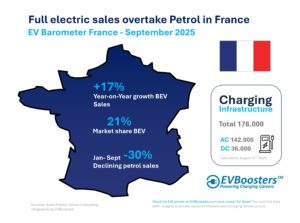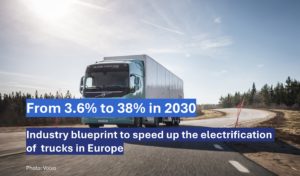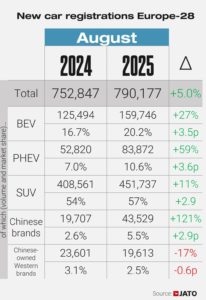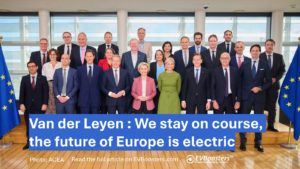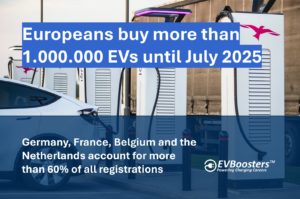In week 46 we added the following reports:
- The Internal Combustion Engine Bubble | Greenpeace
- Electric vehicles will soon lead global auto markets, but too slow to hit climate goals without new policy | Innovation Policy & Technology
- State of charge: EVs, Batteries and Battery Materials | Adamas intelligence
- The evolution of heavy-duty vehicles in china | The ICCT
- Europe’s auto dealerships: change is coming | Scope
The reports are shared and available free of charge in our database.
Over US$2 trillion is at risk in market capitalization and debt across the world’s 12 largest car manufacturers alone
From New York to the UK to Singapore, governments are aggressively enforcing sales restrictions on diesel and gasoline automobiles as climate change worsens. New data reveals that conventional manufacturers are still falling behind in the switch to electric vehicles and that their sales goals are not in line with the 1.5°C objective set forth in the Paris Climate Agreement.
This report evaluates the discrepancy between the sales ambitions of conventional manufacturers and the amount of diesel and gasoline vehicle sales that are practical under the 1.5°C Paris Agreement limit. Researchers have discovered that automakers must quicken the transition to zero-emission vehicles if they don’t want to face rising financial losses and a global warming catastrophe.
The Internal Combustion Engine Bubble | Greenpeace

By 2030, 60% of new passenger cars will be electric, and by 2035, 100%.
EVs are positioned to rule the automotive industry, but without more governmental support, their ability to do so at a rate that meets climate targets is not certain. Case studies of solar and wind technology show the risk of inadequate government support, especially for technologies that have great social benefits but are undervalued by markets, raising the possibility of delayed innovation and adoption. Case studies using solar and wind technologies provide encouragement that, despite the effects of the learning curve, innovation and cost savings will continue as EV use grows.
This report offers a policy roadmap for capturing the benefits of ZEVs for the environment, economy, and public health. Its top recommendation is that ZEV sales standards be well-designed and reach 60 percent of new passenger vehicles by 2030 and 100 percent by 2035, along with stricter tailpipe emissions regulations, fair consumer incentives, and supply-chain development.
Electric vehicles will soon lead global auto markets, but too slow to hit climate goals without new policy | Innovation Policy & Technology

The global EV market’s performance over the past half-year (h1 2022)
A massive 118% increase in the number of watt-hours of battery capacity deployed onto roads over the same period the previous year, as well as corresponding increases in the consumption of lithium, nickel, and cobalt, were the results of a 75% year-over-year increase in EV sales in the Asia Pacific region in 2022 H1.
This “State of Charge” report gives a useful summary of the performance of the worldwide EV market during the previous half-year (in this example, “2022 H1”) and its effects on the constantly changing supply chains for batteries and battery materials.
State of charge: EVs, Batteries and Battery Materials | Adamas intelligence

The groundwork for future rules for the direct control of CO2 in China
Energy is used by heavy-duty vehicles (HDVs), which also release air and climate pollutants. With around 90% of sales in 2021, diesel-powered HDVs continued to rule the Chinese HDV market. China pledged in 2020 to achieve carbon neutrality by 2060 and a peak in CO2 emissions by 2030. Since then, the country has studied several plans to lower GHG emissions from road cars.
This report provides the groundwork for future rules for the direct control of CO2 by assessing the efficacy of strategies in reducing emissions from heavy-duty vehicles between 2012 and 2021.
The evolution of heavy-duty vehicles in china | The ICCT

Evaluating the various automobile taxation structures in Europe.
The automobile industry is changing, and this will result in a sharp increase in disruption of the European car dealership sector. Three key issues that the industry must face are the switch to the agency sales model, the rising percentage of automobiles being sold online, and the electrification of vehicles. The requirement for investment in digitalization, electric-vehicle (EV) equipment, and know-how will squeeze profit margins and perhaps limit future cashflow. Increased competition, less pricing power, and rising pressure on capital expenditure will all contribute to this.
This document sets out three challenges Europe’s car dealership business will have to deal with in the coming years in the face of rapidly increasing disruption.
Europe’s auto dealerships: change is coming | Scope

If you have any suggestions please consider providing feedback or uploading your report.

